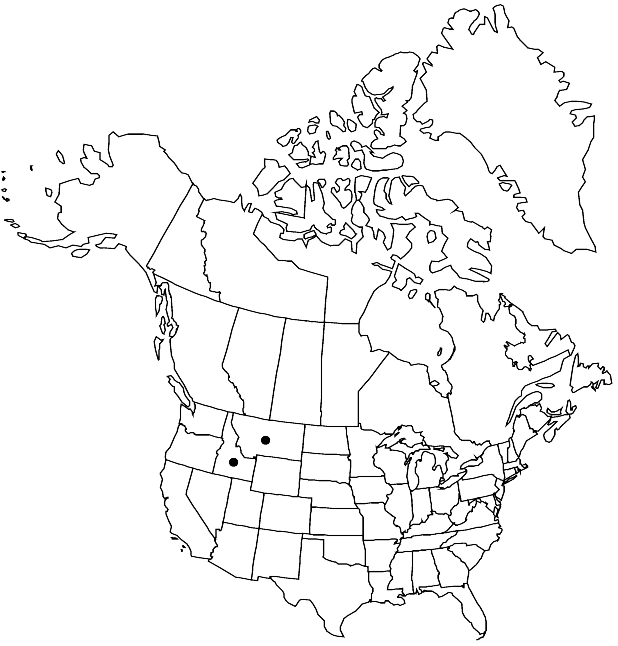Physaria pycnantha
Novon 17: 188, fig. 5. 2007.
Perennials; caudex branched, (densely cespitose and forming hemispheric mounds); densely pubescent, trichomes 5-rayed, rays bifurcate near base, fused at base, (strongly tuberculate throughout). Stems few to several from base, erect, (usually exceeding basal leaves), 0.3–0.7 dm. Basal leaves: blade linear-spatulate, 1.5–4 cm, (base narrowed gradually to petiole), margins entire. Cauline leaves: blade spatulate, similar to basal. Racemes crowded in distal 1/3, (4–10-flowered). Fruiting pedicels (loosely to strongly sigmoid), 6–10 mm. Flowers: sepals (pale yellow), oblong to elliptic, 3–4 mm, (median pair usually thickened apically, cucullate); petals (sometimes with slight tinge of orange basally), lingulate, 4–6 mm. Fruits ellipsoid, slightly inflated (somewhat latiseptate), 4–5 mm, (apex acute); valves pubescent, trichomes erect, appearing slightly shaggy; ovules 4–8 per ovary; styles 2.5–3 mm, (shorter than mature fruits). Seeds ± flattened, convex on outer side.
Phenology: Flowering late May–Jun(-Jul).
Habitat: Dry, windswept knolls of limestone gravel, with other cushion-forming plants
Elevation: 1600-2300 m
Discussion
Physaria pycnantha is morphologically similar to 56. P. nelsonii.
Selected References
None.
